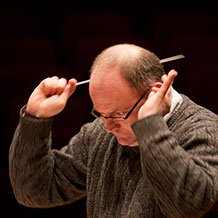
University of York Chamber Orchestra/John Stringer, Sir Jack Lyons Concert Hall, University of York, February 23
THE big attraction of the evening was Mendelssohn’s Second Piano Concerto, but it was attractively preceded by Kaija Saariaho’s Terra Memoria and Britten’s song-cycle A Charm Of Lullabies, in the version orchestrated by Colin Matthews.
Despite this nicely varied menu, it was a slightly strange choice. The Saariaho is for string orchestra, which left wind and brass on the sidelines. No harm in that, except that the remaining pieces relegated the orchestra to an accompanying role, leaving it little chance to show its full colours. For John Stringer has moulded this orchestra into a fine ensemble – it deserved more exposure here.
Saariaho, who celebrates her 70th birthday in October, has lived in Paris for 40 years, although born in Helsinki. Her outlook is very much pan-European. Terra Memoria, which dates from 2007, is marked “for those departed”.
In under eight minutes, it articulates six different moods. Stealing on the ear as if already underway, it meanders gently, with snippets of solo violin: the string principals are a major feature of the piece.
It becomes a little angrier before calming into a plaintive, slithering motif in the upper strings. Still favouring upper voices, it then gets darker. Now laced with tremolo, it becomes more insistent as it gains in rhythmic momentum and reaches a tutti unison, a most effective climax.
Thereafter it slows into something more diffuse, echoing the opening. Although not specifically in a minor key, it has the feeling of one. The orchestra approached it tenderly, which made it even more engaging.
Time for another gripe. The printed programme fell a long way short of its usual standard here. The five songs of the Britten were neither numbered nor laid out properly, still less were there any texts, which is de rigueur for a solo vocal work. The concerto movements were not listed either.
This was especially unhelpful for the singer, Ellie Stamp. She was listed as a soprano, although the cycle is written for mezzo-soprano: Stamp’s lower range was not really strong enough, but when given the chance she showed plenty of heft above the stave.
Without the texts, however, it was not immediately obvious to the casual listener where she was, a task not made easier by Matthews running the first three and the last two songs together.
In general, despite the added intensity of the title song, the orchestra was a little too heavy in its accompaniment, with a preponderance of low tone provided by three double basses – at least one too many. Stamp has a good sound and a pleasing personality, but she was not best served here.
John Smith – he might be encouraged to use his middle name, if he has one – was the fluent soloist in the Mendelssohn. He graduated from this department last summer. He frowns a lot, no doubt in pursuit of expression, but otherwise is free of histrionics in what is a free-wheeling technique. The runs in the opening Allegro were admirably clear and he discovered plenty of drama in its development section.
He was inclined to over-romanticise the slow movement, which slowed almost to a halt, but when he increased the tone here it was out of scale with what had preceded it. His best was kept till last. His staccato touch in the finale was excellent; he maintained an exciting pace, injecting sforzandos without mannerisms, and the orchestra caught his enthusiasm.
Review by Martin Dreyer
